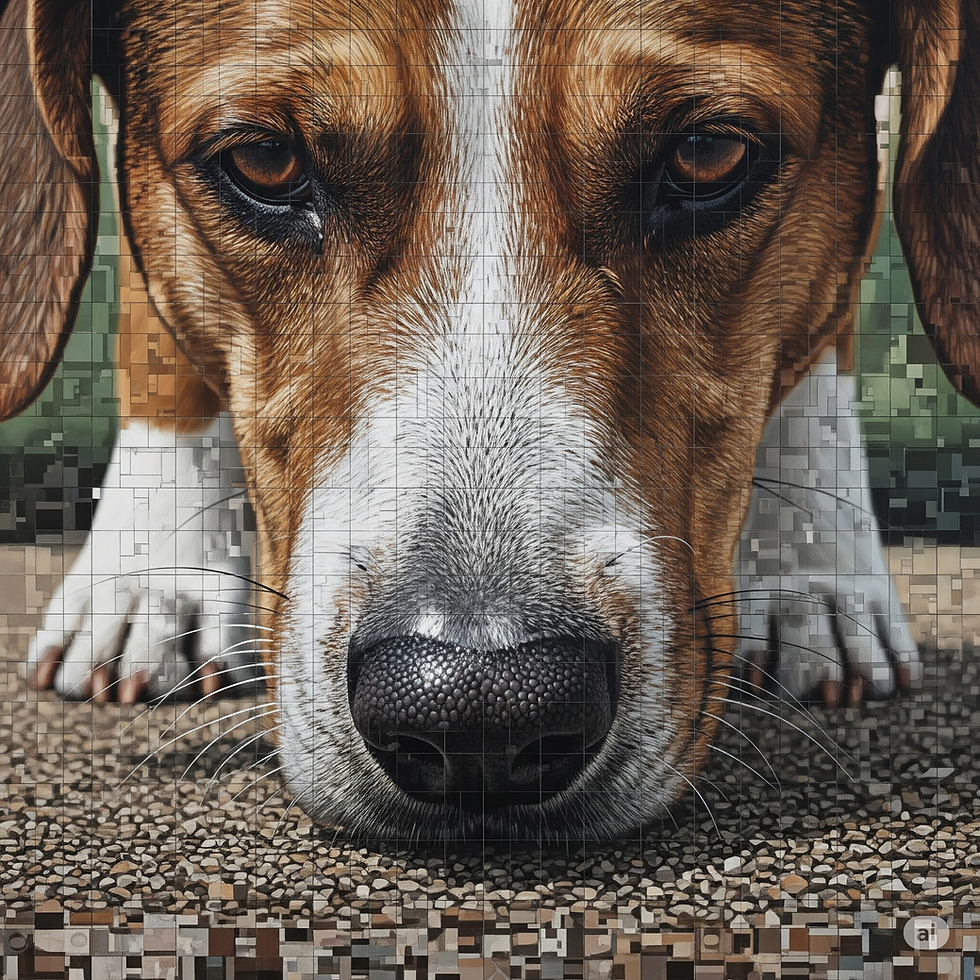Super Sniffers! The Incredible Power of Your Dog's Nose
- Max Machon

- Sep 22
- 3 min read

Lately, I’ve been diving into the sport of nose work with my dog, Winslow—and it’s completely changed the way I think about how our dogs experience the world. Watching him work has opened my eyes to just how powerful and complex a dog’s sense of smell really is.
As I started learning more about nose work training, I found myself going down a rabbit hole of scientific research on canine olfaction. What I discovered was both fascinating and eye-opening: smell isn’t just a sense for dogs—it’s a central part of how they think, feel, and navigate their environment.
This month, we’re highlighting one especially interesting study that explores the deep neurological role smell plays in your dog’s brain. Whether you're a trainer, a dog parent, or just curious about how your dog "sees" the world, this research is worth a look.
The Incredible Power of Your Dog’s Nose
New research reveals how scent shapes emotion, learning, and behavior
If you’ve ever watched your dog’s nose twitch excitedly on a walk, you’ve already seen the power of scent in action. But new research is showing just how central smell is to your dog’s brain—and how it impacts nearly everything they do, from learning to bonding with you.
A 2024 study by researchers at the University of Helsinki looked at the connection between canine olfaction (smell) and the brain, and what they found is truly fascinating.
Smell Is How Dogs "See" the World! Dogs don’t just notice smells—they think in scent. Their noses are packed with hundreds of millions of scent receptors, far more than we humans have. But what’s even more amazing is that the dog brain has dedicated pathways that link scent detection directly to areas of memory, emotion, and even vision.
This means that when your dog picks up a familiar scent (like yours!), it’s triggering not just recognition, but potentially feelings of safety, calm, and connection. Because of the strong neural connection between the visual and olfactory cortexes your dog may actually be able to see you when they smell you.
From Nose to Brain: A Full-Body Experience
The researchers used advanced brain imaging to show how scent activates multiple areas of the dog’s brain. These include:
The limbic system, which handles emotions like fear, joy, and affection
The hippocampus, which manages memory and learning
Even parts of the visual system, meaning smell may literally “color” what your dog sees
This explains why dogs seem to remember places or people based on scent alone—even if years have passed.
What does this mean for you and your dog?
Training through the nose: Scent-based games like nose work or treat searches can actually boost your dog’s confidence, reduce anxiety, and increase focus.
Better behavior in public: Familiar smells can help your dog stay calmer in new environments. Carry a favorite toy, blanket, or even an item of your clothing to offer comfort.
Enrichment is essential: Giving your dog time to sniff on walks isn't a distraction—it's mental exercise. Letting them follow their nose is one of the best ways to engage their brain.
This study also points to the future of dog training and behavior science: using scent not just for detection or games, but as a tool to understand emotions and improve quality of life.
At Ready, Set…Train!, we’ve seen how dogs using their noses can benefit training —and this research backs up what we see every day in classes and behavior work. Whether it’s a reactive dog learning to stay calm around others, or a shy puppy gaining confidence, scent is often the secret key.
Interested in trying scent-based training with your dog?
Ask us about our scent based enrichment games, nose work classes, or how to incorporate scent routines into daily life!
Source: “Olfaction in the Canine Cognitive and Emotional Processes” – Berg, Mappes & Kujala (2024), Neuroscience & Biobehavioral Reviews



Comments